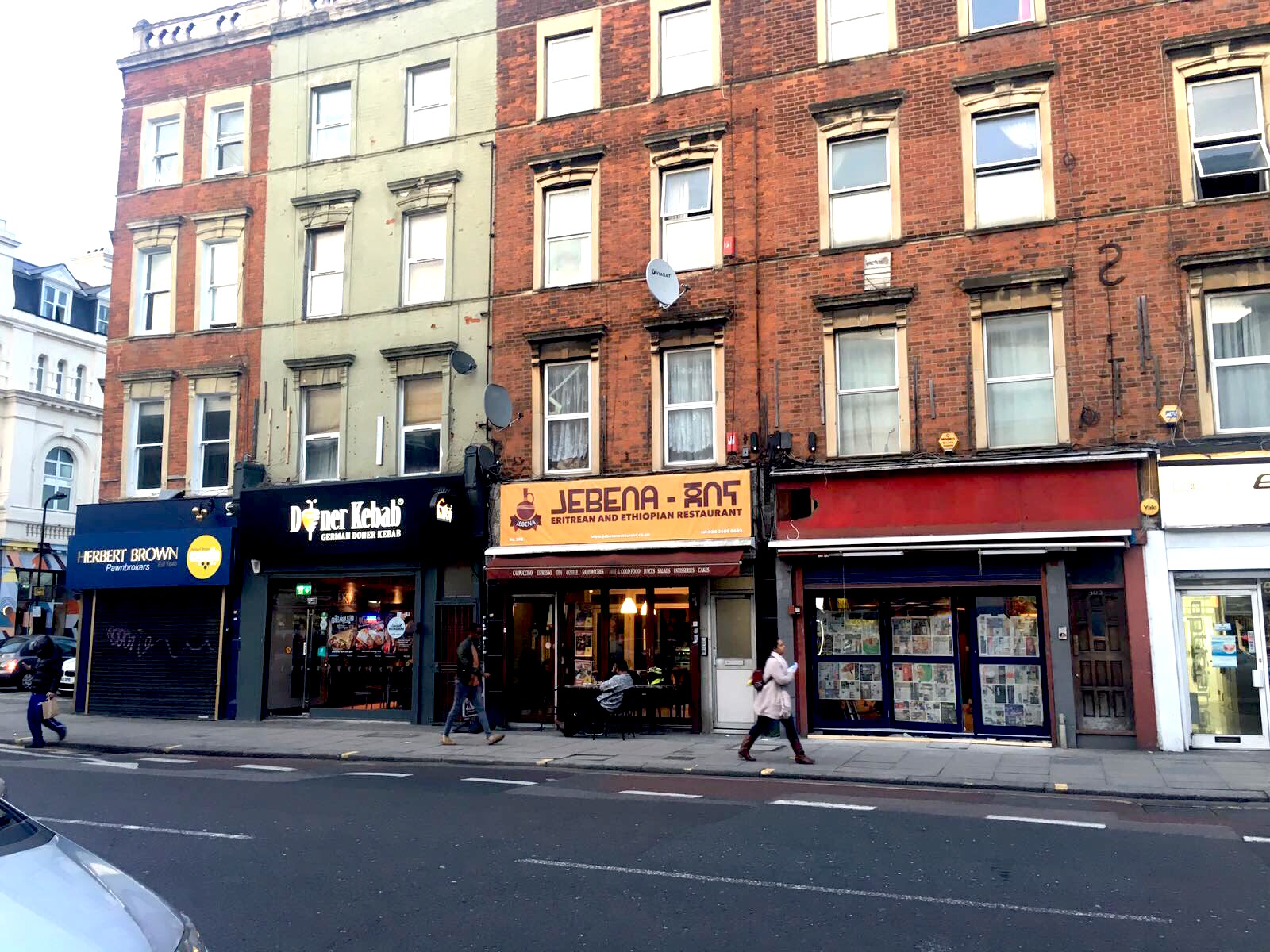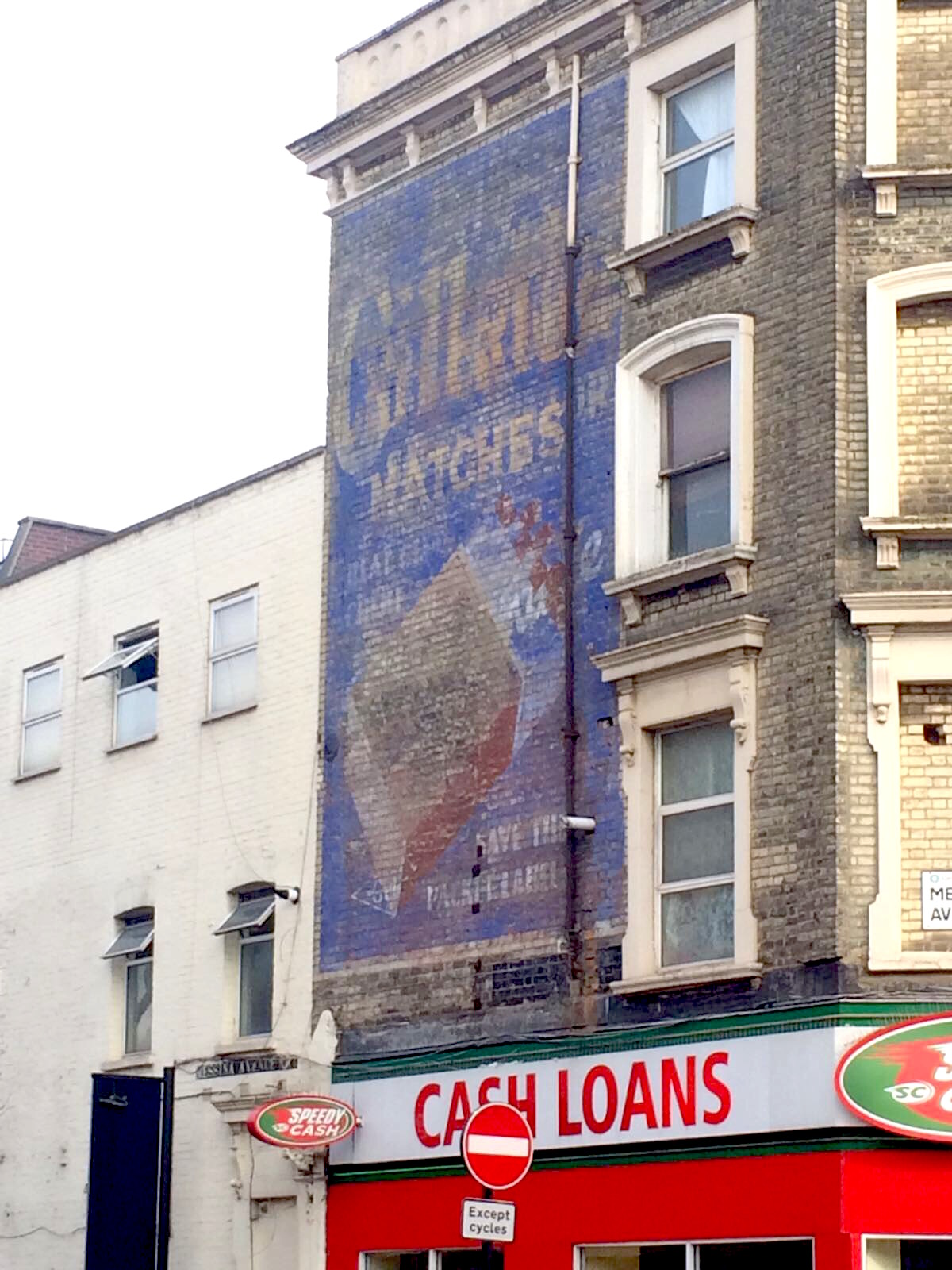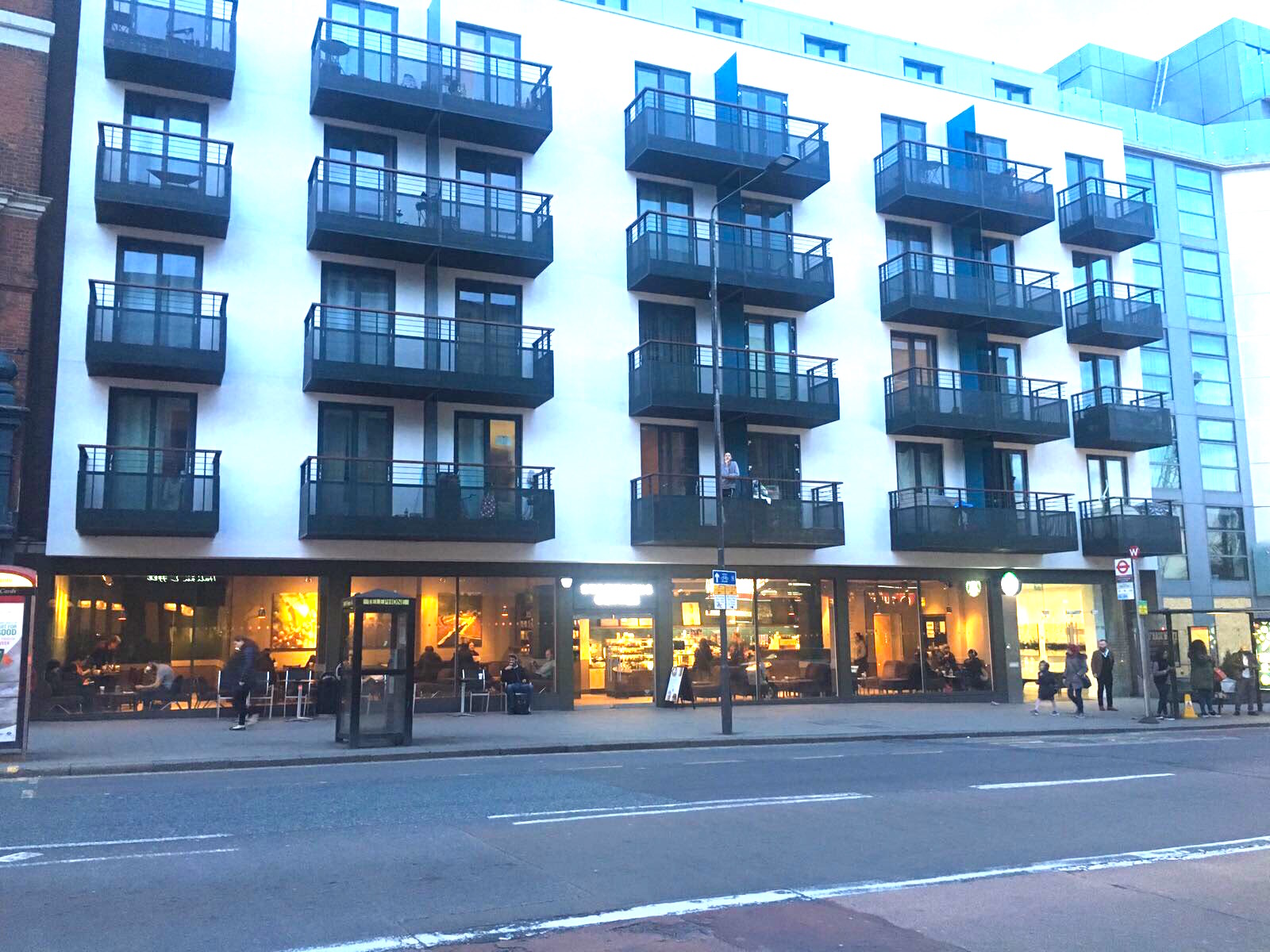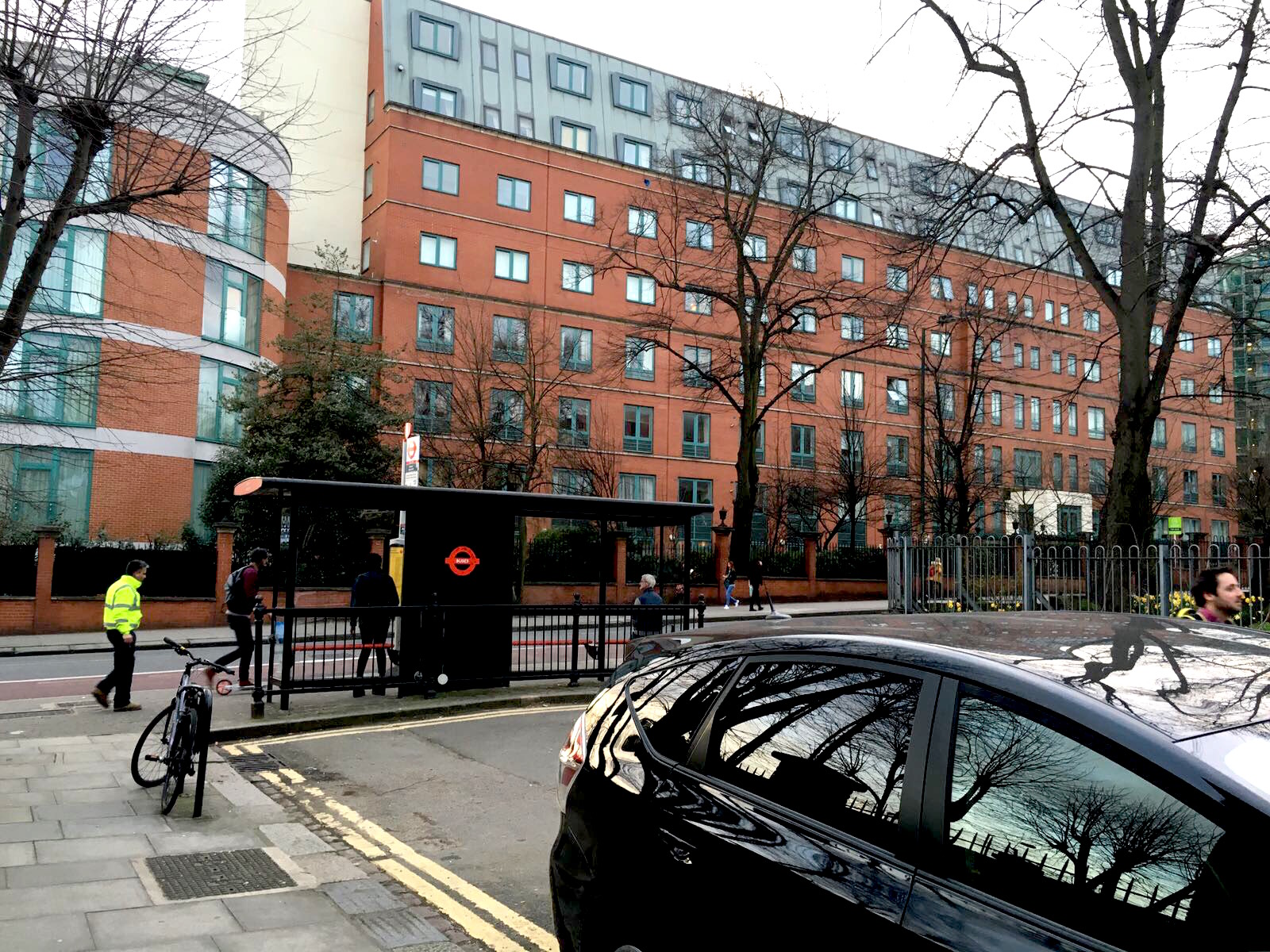“For me, Kilburn is a melting pot of different cultures and classes, however, the drama [NW] uses the area as a tool to present misconstrued ideas about social disparities.”
Working class areas are subject to generalisations. Often, they are used as backdrops for TV dramas that claim to authentically portray the everyday lives of people. However, when television aims to do this, it often fails.
Growing up in a typical working class area like Kilburn, I have been the victim of preconceived notions made about me. And Kilburn, like many other areas, has been subjected to degradation by the media.

This photo is just one example of Kilburn’s diversity represented in its international cuisine [Image credit: Dina Berisha]
Unfortunately NW does conform to the stereotypes – its bleakness is an integral part of the story.
The drama is predominantly filmed in Kilburn – and although seeing familiar streets was comforting, they were depicted as desolate, pessimistic and as hot beds for violence and crime.
The plot itself also felt contrived. It follows two lifelong friends – Natalie and Leah – who grew up on the same council estate, and whose paths in life have distinctly diverged. Natalie was depicted as the embodiment of success, something that has enabled her to “climb up the social ladder”, while Leah is still closely tied to her roots.
Although the drama seeks to tackle the issue of social mobility, it actually makes society divisive as it enforces the differences between classes.
For me, Kilburn is a melting pot of different cultures and classes. But the drama uses the area as a tool to present misconstrued ideas about social disparities.
Some residents of Kilburn also have taken issue with how their area has been depicted and how street violence has been normalised in the TV drama. They have also criticised the lack of community spirit in the adaptation and how conflict and hostility between people is so prominently featured.

A worn-out advert for matches above a Speedy Cash branch, representing old and new Kilburn [Image credit: Dina Berisha]
“I do think that the community does seem more cohesive and less starkly divided than in NW.”
The 25-year-old acknowledged the same key issues I had with how the drama depicts Kilburn’s community. As someone who has only recently moved to Kilburn, Jonny said it is the “most ethnically and culturally diverse [area] I have lived in”.
Kilburn’s ability to bring so many different cultures together and encourage tolerance and acceptance is something that I have always found particularly appealing. Another young resident of Kilburn had a slightly more favourable view of the drama. The 21-year-old said:
“[The show] does touch on very real themes and occasional realities.”

A block of flats above Starbucks, representing the growing presence of corporate coffee chains on the high road [Image credit: Dina Berisha]
Nearby areas like Queens Park and West Hampstead have been subjected to gentrification. Although Kilburn still remains less gentrified compared to its affluent neighbours, in recent years it has attracted young, middle class professionals.
Joanna Gowers, 21, a sociology graduate who campaigned for Hampstead and Kilburn Labour, is a lifelong Kilburn resident, and she claimed gentrification could really put local businesses at risk.
“There are clear signs of gentrification in the area and that they have the potential to undermine small businesses.”

Another example of gentrification- a block of flats that have recently been built next to Kilburn Park Station [Image credit: Dina Berisha]
“The reality of it is the increasing cost of living, accommodation being entirely inaccessible to most people and the increasing pressure on small and local businesses”.
In addition, regeneration in South Kilburn has caused residents to move out of the area due to unaffordable rents.
It is obvious that the wrong portrayal of Kilburn as a divided community, as well as ongoing gentrification, could damage the community if they carry on accelerating, and I fear that they will diminish Kilburn’s working class spirit.
In a time where recent political events such as Brexit and the inauguration of Donald Trump as President of the United State have polarised the public, it would have been great for television to present content that champions unity between people instead of exploiting their differences.

